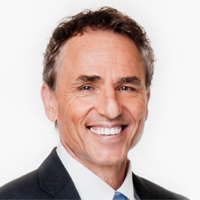How a Low-Fee Fund Can Be a High-Cost Mistake
Investors who focus only on fees may regret it as they try to make their savings last through retirement.


Everyone knows that keeping investing fees and expenses to a minimum is one of the keys to building a retirement nest egg. After all, every dollar that stays in your account instead of going toward a fee can grow for your future.
However, the cost of investing can be far greater than just fees and expenses, especially for people nearing retirement. If you are so focused on fees that you ignore other crucial investment principles — such as diversification — you could be losing piles of money to save yourself pennies on the dollar.
So, how do fees and expenses differ from the cost of owning an investment?
Let’s be clear: A fee is a charge for services rendered. An expense is the hard cost of being in an investment. There is a physical cost of doing business even for discounters like Vanguard or Fidelity. After all, they have to turn on the lights, pay people and make trades.
From just $107.88 $24.99 for Kiplinger Personal Finance
Become a smarter, better informed investor. Subscribe from just $107.88 $24.99, plus get up to 4 Special Issues

Sign up for Kiplinger’s Free Newsletters
Profit and prosper with the best of expert advice on investing, taxes, retirement, personal finance and more - straight to your e-mail.
Profit and prosper with the best of expert advice - straight to your e-mail.
For the investor, fees and expenses are only part of their cost of ownership. Consider a person who chose to retire in 2007 in a seemingly stable market. Let’s say Doug, age 62, had built up a 401(k) of $500,000. Although he was given the choice of investing in target-date funds through his plan, he decided that remaining fully invested in stocks was a much better proposition. He failed to diversify an appropriate amount with fixed-income assets, and that decision ended up costing him a LOT of money.
Doug wisely kept his fees and expenses to a minimum. So, what went wrong?
Other than failing to diversify, Doug made all the right moves. He rolled over his 401(k) to a large discount brokerage. He placed all of his funds into a famous index fund with the lowest fees and expenses in the industry: a minuscule 0.14%. Doug was very proud of this choice and was confident that, by staying with the index, he would continue to realize strong average rates of return, and that by keeping fees to a minimum, he would be funding his own retirement rather than a broker’s.
Once he retired, Doug needed income from his IRA. His plan was to keep his withdrawals to a conservative minimum, 4%. Much of the literature he had read pointed to 4% as a “safe” withdrawal rate. In 2007, bond interest rates were in the 5% range. But Doug had done very well by staying in the stock market the past 25 years and viewed a 5% bond return as being “inferior” to the 8% to 9% average he had experienced in the past and anticipated over the next 20 years.
Doug’s grasp of statistical averages was sound, but his strategy was flawed from the inception. He ignored key investing concepts like diversification, sequence-of-returns risk and time horizon.
Although his fees were the lowest in the world, his cost of remaining fully invested in the S&P 500 turned out to be quite steep. By March 2009, the S&P 500 had lost 57% of its value from its peak in 2007. (Source: Standard & Poor’s)
The cost of holding his investment for that time period: $285,000.
Although the market would begin to recover by the summer of 2009, Doug was no longer contributing to his account; he was drawing from it. He was still relying on withdrawing the $20,000 a year from his IRA and was ready to take his third year of withdrawals by 2009. If he maintained the same $20,000 annual withdrawal, the total of withdrawals would come to $60,000. After a $285,000 loss, a $500,000 account would be left with $215,000. Using simple math, if $60,000 is subtracted from $215,000, the account holder is left with $155,000.
Can this happen? It did happen to many retirees in the crash of 2008. Those who haven’t retired yet might give Doug some very simple advice: Stop withdrawing. Working people forget that the comfortable six-figure income from work is no longer there. That $20,000 annual withdrawal represents the intended end game of a lifetime of savings and dreams.
Sure, Doug could skimp on his lifestyle or go back to work part time. But neither of those ideas were part of his Plan A. He found himself in a grimmer Plan B. The fact that his fees and expenses were low offered little consolation.
If Doug’s income needs remained at $20,000 in order to keep funding his lifestyle (along with Social Security and pension income), he would no longer be taking a 4% withdrawal from his account in order to net $20,000. A $20,000 withdrawal from $215,000 amounts to a 9.3% withdrawal.
Doug’s two biggest mistakes
There are two money concepts important to understand in retirement: time horizon and sequence-of-returns risk.
Doug’s first mistake was investing like he was still 35 years old. He kept listening to the same advice he always had. That was his biggest mistake because his time horizon had shifted dramatically. His second mistake was not realizing the “flaw of averages.” While stocks may average an 8% to 10% return over long time periods, there are times when they can be down 20% to 40%. When contributing to the pile during such times, you are buying more shares at a discount. When withdrawing from the pile, you are cashing out at the worst possible time. That’s the sequence of returns risk in a nutshell.
While he kept his fees and expenses low, he learned (the hard way) that the cost of an investment can be far greater. While many critics point to annuities as having higher fees or expenses, they may have the lowest cost in some cases. With the right principal-protected annuity, Doug would not have lost a penny in the crash and could have counted on his annual income to remain at $20,000 for life. That element of safety, even if it comes with a fee, may end up resulting in a lowest cost.
Kevin Derby contributed to this article.
The appearances in Kiplinger were obtained through a PR program. The columnist received assistance from a public relations firm in preparing this piece for submission to Kiplinger.com. Kiplinger was not compensated in any way.
Profit and prosper with the best of Kiplinger's advice on investing, taxes, retirement, personal finance and much more. Delivered daily. Enter your email in the box and click Sign Me Up.

Steve Jurich is the founder of IQ Wealth Management in Scottsdale, Ariz. He has more than 23 years of experience helping individuals, families and businesses realize their money goals. He is the author of the book "Smart is the New Rich" and hosts the daily radio show "Mastering Money" on Money Radio. Jurich is an Accredited Investment Fiduciary® and a Certified Annuity Specialist® who manages the IQ Wealth Black Diamond Dividend Growth ™ and the Blue Diamond Technology Leaders™ portfolios.
-
 I'm want to give my 3 grandkids $5K each for Christmas.
I'm want to give my 3 grandkids $5K each for Christmas.You're comfortably retired and want to give your grandkids a big Christmas check, but their parents are worried they might spend it all. We ask the pros for help.
-
 If You're Not Doing Roth Conversions, You Need to Read This
If You're Not Doing Roth Conversions, You Need to Read ThisRoth conversions and other Roth strategies can be complex, but don't dismiss these tax planning tools outright. They could really work for you and your heirs.
-
 Could Traditional Retirement Expectations Be Killing Us?
Could Traditional Retirement Expectations Be Killing Us?A retirement psychologist makes the case: A fulfilling retirement begins with a blueprint for living, rather than simply the accumulation of a large nest egg.
-
 I'm a Financial Planner: If You're Not Doing Roth Conversions, You Need to Read This
I'm a Financial Planner: If You're Not Doing Roth Conversions, You Need to Read ThisRoth conversions and other Roth strategies can be complex, but don't dismiss these tax planning tools outright. They could really work for you and your heirs.
-
 Could Traditional Retirement Expectations Be Killing Us? A Retirement Psychologist Makes the Case
Could Traditional Retirement Expectations Be Killing Us? A Retirement Psychologist Makes the CaseA retirement psychologist makes the case: A fulfilling retirement begins with a blueprint for living, rather than simply the accumulation of a large nest egg.
-
 I'm a Financial Adviser: This Is How You Can Adapt to Social Security Uncertainty
I'm a Financial Adviser: This Is How You Can Adapt to Social Security UncertaintyRather than letting the unknowns make you anxious, focus on building a flexible income strategy that can adapt to possible future Social Security changes.
-
 I'm a Financial Planner for Millionaires: Here's How to Give Your Kids Cash Gifts Without Triggering IRS Paperwork
I'm a Financial Planner for Millionaires: Here's How to Give Your Kids Cash Gifts Without Triggering IRS PaperworkMost people can gift large sums without paying tax or filing a return, especially by structuring gifts across two tax years or splitting gifts with a spouse.
-
 'Boomer Candy' Investments Might Seem Sweet, But They Can Have a Sour Aftertaste
'Boomer Candy' Investments Might Seem Sweet, But They Can Have a Sour AftertasteProducts such as index annuities, structured notes and buffered ETFs might seem appealing, but sometimes they can rob you of flexibility and trap your capital.
-
 Quick Question: Are You Planning for a 20-Year Retirement or a 30-Year Retirement?
Quick Question: Are You Planning for a 20-Year Retirement or a 30-Year Retirement?You probably should be planning for a much longer retirement than you are. To avoid running out of retirement savings, you really need to make a plan.
-
 Don't Get Caught by the Medicare Tax Torpedo: A Retirement Expert's Tips to Steer Clear
Don't Get Caught by the Medicare Tax Torpedo: A Retirement Expert's Tips to Steer ClearBetter beware, because if you go even $1 over an important income threshold, your Medicare premiums could rise exponentially due to IRMAA surcharges.
-
 I'm an Insurance Pro: Going Without Life Insurance Is Like Driving Without a Seat Belt Because You Don't Plan to Crash
I'm an Insurance Pro: Going Without Life Insurance Is Like Driving Without a Seat Belt Because You Don't Plan to CrashLife insurance is that boring-but-crucial thing you really need to get now so that your family doesn't have to launch a GoFundMe when you're gone.